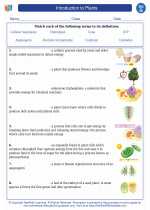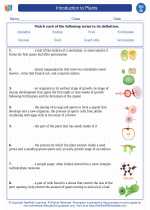Climate
Climate refers to the long-term patterns of temperature, humidity, wind, precipitation, and other atmospheric conditions in a specific area. It is different from weather, which refers to short-term changes in atmospheric conditions.
Factors Affecting Climate
- Latitude: Areas closer to the equator receive more direct sunlight and tend to have warmer climates.
- Altitude: Higher elevations generally have cooler temperatures due to lower air pressure and reduced atmospheric heat retention.
- Distance from Water: Coastal areas experience milder and more consistent climates compared to inland areas due to the moderating effects of water bodies.
- Ocean Currents: Ocean currents can significantly influence the climate of coastal regions by transporting warm or cold water from one area to another.
- Wind Patterns: Prevailing wind patterns can impact temperature and precipitation in a given region.
- Topography: Mountain ranges can create rain shadows and other microclimates, affecting the overall climate of an area.
Climate Classification
Climate is often classified using the Köppen climate classification system, which categorizes climates based on temperature and precipitation patterns. The main climate types include tropical, dry, temperate, continental, and polar climates.
Impact of Climate Change
Human activities, such as burning fossil fuels and deforestation, have led to an increase in greenhouse gases and global temperatures. This has resulted in various impacts on ecosystems, including changes in precipitation patterns, increased frequency of extreme weather events, and shifts in the distribution of species.
Study Guide
To understand climate, it is important to grasp the concepts of latitude, altitude, and the influence of ocean currents and wind patterns. Also, familiarize yourself with the Köppen climate classification system and its different climate types. Finally, be aware of the potential consequences of climate change on both natural and human systems.
For further study, explore the specific characteristics of each climate type and how they impact vegetation, animal life, and human societies. Additionally, consider the strategies and policies that can mitigate the effects of climate change and promote sustainable environmental practices.
[Climate] Related Worksheets and Study Guides:
.◂Biology Worksheets and Study Guides High School. Introduction to plants

 Worksheet/Answer key
Worksheet/Answer key
 Worksheet/Answer key
Worksheet/Answer key
 Vocabulary/Answer key
Vocabulary/Answer key
 Vocabulary/Answer key
Vocabulary/Answer key
 Vocabulary/Answer key
Vocabulary/Answer key
 Vocabulary/Answer key
Vocabulary/Answer key
 Vocabulary/Answer key
Vocabulary/Answer key
